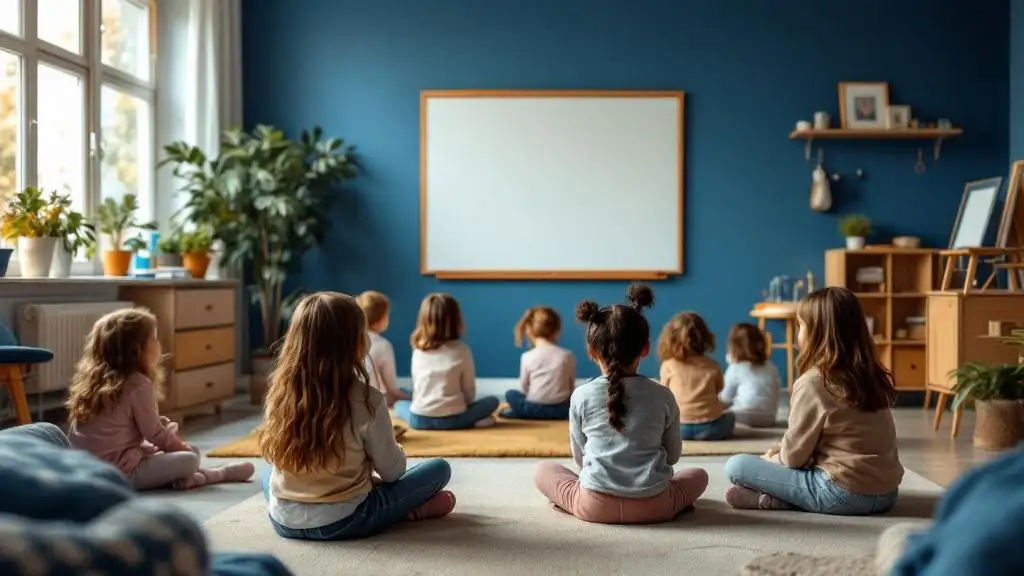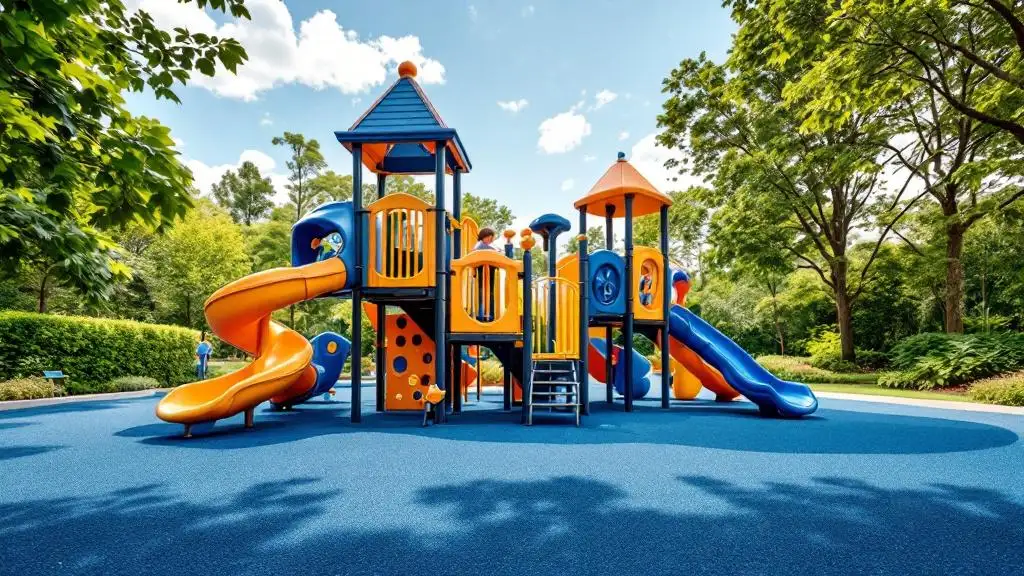
Understanding the Benefits of Behavioral Therapy in Managing Childhood Anxiety
Behavioral therapy, especially cognitive-behavioral therapy (CBT), stands as a cornerstone in treating anxiety disorders among children. With its structured, evidence-based approach, it effectively helps young individuals understand, manage, and reduce their anxieties. This article explores the multifaceted benefits of behavioral therapy for children, highlighting the techniques, long-term outcomes, and how it compares with other treatment options.
Overview of Behavioral Therapy for Children with Anxiety
What is behavioral therapy for children with anxiety?
Behavioral therapy for children with anxiety mainly refers to cognitive-behavioral therapy (CBT), which is the most supported first-line treatment for mild to moderate anxiety conditions. CBT helps children understand how their thoughts, feelings, and behaviors are interconnected.
A core part of CBT is exposure therapy, where children are gradually and systematically exposed to their fears or anxiety triggers in a safe, controlled environment. This process aims to reduce avoidance behaviors and decrease fear over time.
The therapy emphasizes teaching children coping skills and strategies to manage anxiety, such as recognizing maladaptive thought patterns and replacing them with positive or realistic thoughts. Additionally, cognitive restructuring is used to challenge and modify dysfunctional beliefs.
For children with more severe anxiety, CBT is often complemented with medication, such as selective serotonin reuptake inhibitors (SSRIs), to enhance treatment outcomes.
Parents are integral to this process. They support their children by helping them tolerate anxious feelings, avoiding inadvertently reinforcing fears, and modeling calm, confident behaviors. This active involvement can strengthen the effects of therapy and support long-term management of anxiety.
Empirical Support and Effectiveness of CBT in Children
Research findings supporting CBT efficacy
Cognitive Behavioral Therapy (CBT) for children with anxiety disorders is highly supported by empirical research. Over 40 different studies confirm that CBT effectively reduces anxiety symptoms and improves overall functioning. Randomized controlled trials have demonstrated that approximately two-thirds of children treated with CBT are free of their primary diagnosis at the end of treatment.
Moreover, meta-analyses indicate that about 49.4% of youth with anxiety disorders achieve remission following CBT. This therapeutic approach not only reduces anxiety symptoms but also alleviates associated issues such as depression, externalizing behaviors, and social difficulties. Importantly, CBT's effectiveness spans across various ethnic and cultural groups and remains beneficial even when children have comorbid conditions.
Remission rates and symptom reduction statistics
Data reveal that after completing CBT, significant improvements are observed both immediately and at follow-up periods. Long-term follow-up studies, averaging nearly four years post-treatment, show that approximately 53% of children no longer meet criteria for any anxiety disorder, and 63% do not meet the criteria for their primary diagnosis. These results underscore the lasting impact of CBT in treating childhood anxiety.
In terms of symptom severity, about 77.1% of children display noticeable improvement by posttreatment, with lower levels of anxiety reported by both children and parents. Surprisingly, the outcome between individual and group therapy formats is comparable, providing flexibility in treatment delivery.
Long-term benefits and sustainability of results
The positive effects of CBT tend to persist well beyond the immediate post-treatment phase. Follow-up data suggest that children not only maintain initial improvements but often experience further gains. For instance, reductions in anxiety symptoms and improvements in social competence and general functioning are evident at long-term assessments.
Although long-term data is limited, existing studies suggest that around 8% of children might experience relapse within the first year after therapy, which indicates relatively low relapse rates. Additionally, parental involvement appears to enhance long-term outcomes, especially in managing comorbid symptoms.
The durability of these benefits signifies that CBT is not merely a short-term fix but offers enduring relief from anxiety symptoms, helping children develop coping skills that support their mental health into adolescence and beyond. Moreover, adaptations like parent-led interventions have demonstrated promising results, making CBT accessible across diverse settings and increasing opportunities for sustained improvements.
| Aspect | Outcome | Additional Notes |
|---|---|---|
| Remission rate | ~50% | Achieved after CBT programs |
| Symptom reduction | Significant | Observed at posttreatment and follow-up |
| Long-term success | Maintained or improved | Up to 9 years post-treatment |
| Format comparison | Individual vs group | No significant difference |
| Parental involvement | Enhances outcomes | Especially for comorbid issues |
In conclusion, robust evidence confirms that CBT is an effective treatment for childhood anxiety disorders, with benefits that tend to last long after therapy ends. The evolving research through neuroscientific insights and accessible delivery formats continues to support its role as a frontline intervention for young individuals facing anxiety challenges.
Core Components of CBT for Child Anxiety
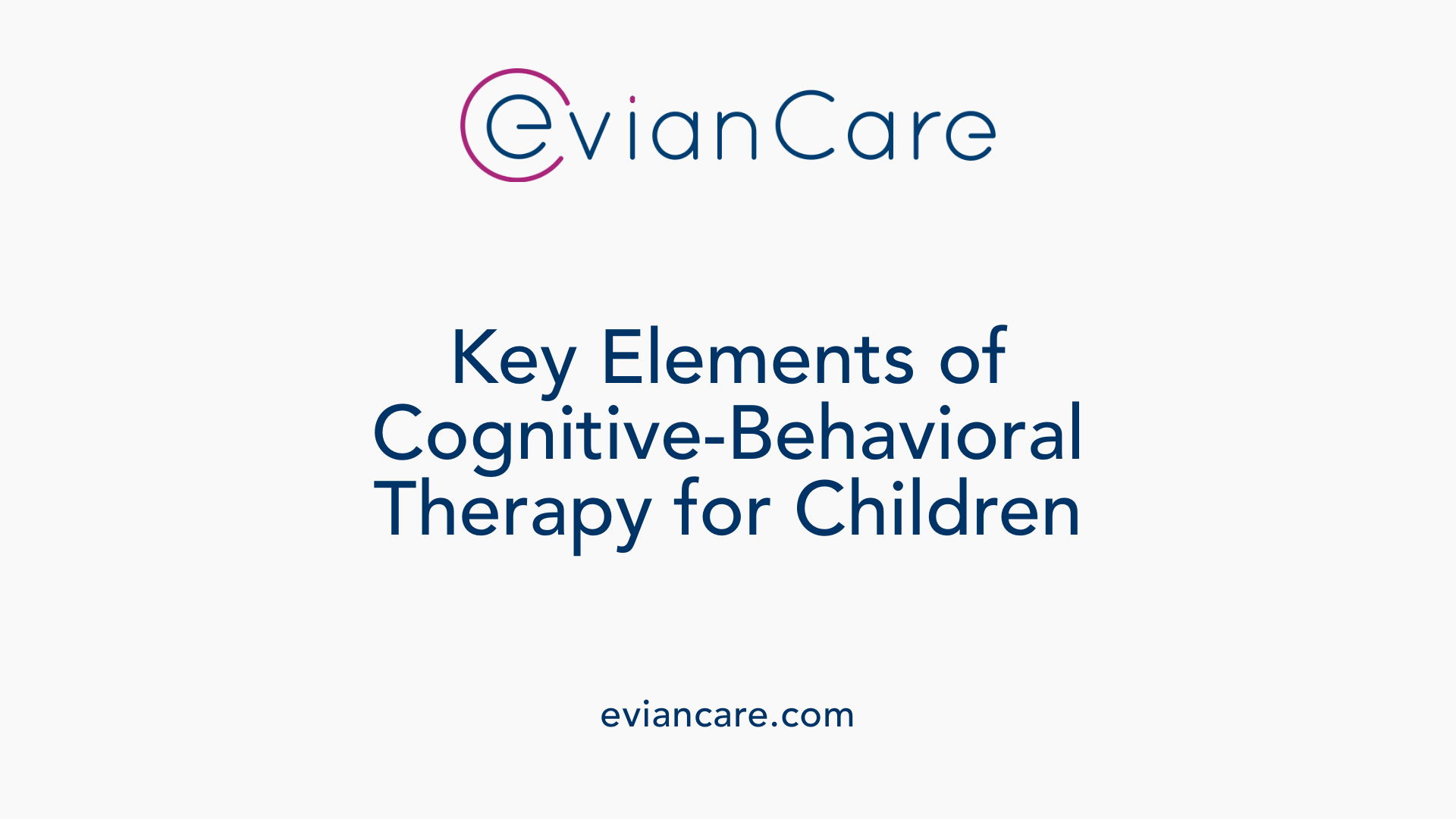
What are the principles of cognitive-behavioral therapy for anxiety disorders in children?
Cognitive-behavioral therapy (CBT) for children with anxiety focuses on understanding and changing the thoughts, feelings, and behaviors that maintain anxiety. The core idea is that anxious thoughts lead to emotional distress and avoidance behaviors, which reinforce the anxiety.
One fundamental principle is helping children recognize and challenge maladaptive thoughts—those that distort reality or exaggerate danger. Through cognitive restructuring, children learn to replace these negative thoughts with more realistic, positive ones.
Exposure therapy is another pillar of CBT, involving creating a hierarchy of feared situations. Children gradually confront these fears in a controlled manner, starting with less threatening stimuli and progressing to more challenging exposures. This process helps desensitize their fear responses and reduces avoidance behaviors.
CBT also emphasizes building specific skills that enable children to manage anxiety independently. These include relaxation techniques, problem-solving, emotion regulation, and social skills training.
The approach encourages parents and teachers to support children outside therapy sessions, reinforcing skills and providing consistent exposure opportunities. In severe cases, CBT can be complemented with medication, but the primary goal remains helping children face their fears to reduce avoidance and anxiety.
Overall, CBT helps children develop a sense of control over their anxiety, promoting resilience and improved functioning. The therapy is adaptable, involving didactic sessions, homework exercises, and active participation, which together foster long-lasting change and symptom reduction.
Family and Parental Involvement in Treatment
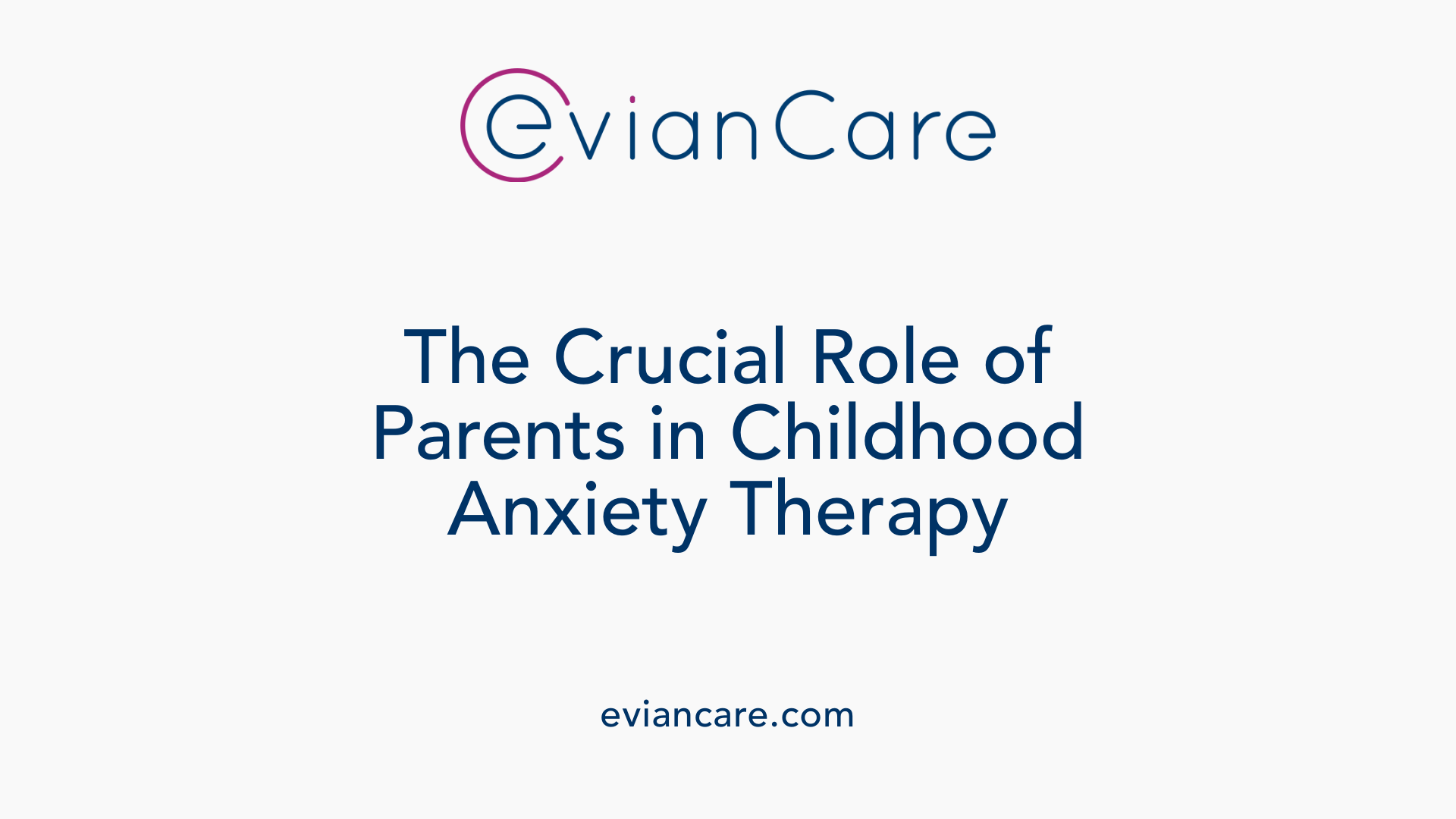
What role do parents play in behavioral therapy for childhood anxiety?
Parents are integral to the success of cognitive-behavioral therapy (CBT) for children suffering from anxiety. They are encouraged to actively support their children during exposure exercises, which involve gradually confronting feared stimuli in a controlled manner. Reinforcing progress outside of therapy sessions is also vital, as it helps children incorporate learned skills into daily life.
Research consistently shows that greater parental involvement enhances treatment outcomes. When parents participate, children tend to demonstrate better general functioning and experience reductions in symptoms, including those related to comorbid conditions like depression or externalizing behaviors. Parents' role includes modeling calm, reassuring responses, and helping children navigate anxiety-provoking situations.
Parent-led interventions and programs
Specialized parent-led CBT programs teach parents how to effectively apply cognitive-behavioral strategies with their children. These programs are typically delivered in structured formats, such as weekly group or individual sessions. Parents learn techniques like cognitive restructuring, managing avoidance, and supporting exposure tasks.
Since parent-led interventions are generally shorter and more scalable, they provide accessible treatment options, especially in settings where professional resources are limited. Well-structured programs often involve about eight to ten weekly sessions, totaling around seven hours of therapeutic contact.
Supporting children through exposure exercises
Parents play a critical role in supporting children through exposure exercises by encouraging testable behaviors and providing calm, supportive presence. They can help children recognize their fears, set up hierarchies of anxiety-provoking situations, and gradually confront these fears.
By actively engaging in exposure activities, parents help children learn that anxiety can be managed and that fears are often manageable with patience and practice. This process fosters resilience and builds confidence, ultimately reducing avoidance behaviors that maintain anxiety.
Enhancing treatment outcomes through family involvement
Family and parental participation significantly influence the long-term success of CBT. Meta-analyses demonstrate that parent involvement contributes to sustained improvements in children's symptoms, overall functioning, and self-esteem.
Involving families also promotes better understanding of anxiety's impact, improves communication, and creates a supportive environment conducive to recovery. The positive effects of family participation can extend even after treatment ends, with some studies indicating continued or enhanced benefits during follow-up periods.
| Aspect | Impact | Additional Details |
|---|---|---|
| Parental Role in Therapy | Support, modeling, reinforcement | Encourages exposure and skill practice at home |
| Type of Parent Interventions | Structured programs, parent-only CBT | Usually 8-10 weekly sessions, scalable, accessible |
| Supporting Exposure Exercises | Guides, reassurance, patience | Facilitates gradual confrontation of fears |
| Long-term Outcomes | Improved functioning, symptom reduction | Sustained benefits, better coping, and confidence |
Recognizing the vital role parents play, many intervention models emphasize empowering families. This approach not only enhances immediate treatment efficacy but also helps sustain gains, promoting healthier, more resilient childhoods.
Interventions and Techniques in Behavioral Therapy
What techniques are used in child behavioral therapy for anxiety?
Child behavioral therapy for anxiety primarily employs Cognitive Behavioral Therapy (CBT) as the main approach. This evidence-based treatment integrates several specific techniques designed to help children manage and reduce anxiety symptoms.
One of the core components is exposure therapy. This technique involves creating a hierarchy of fears—starting with less anxiety-provoking situations and gradually moving to more challenging ones. Children are exposed to these feared stimuli in a controlled, safe environment, helping them build tolerance and diminish avoidance behaviors.
Relaxation training is another vital element. Children learn methods such as deep breathing exercises and mindfulness practices to manage their physiological anxiety responses. These techniques promote calmness and help children cope with physical symptoms, making anxious situations more manageable.
Cognitive restructuring strategies are used to challenge and change distorted or unhelpful thoughts that fuel anxiety. Children are guided to recognize negative thinking patterns and replace them with more realistic, positive thoughts, which, in turn, can reduce emotional distress.
In addition to these core techniques, skills training is incorporated to build coping strategies and resilience. Parents often play a supportive role, especially in parent-led approaches like SPACE, which empower parents to implement CBT techniques at home, reduce accommodation behaviors, and foster a supportive environment.
Homework assignments are regularly used to reinforce what is learned during therapy sessions. These practice tasks allow children to apply new skills in real-world situations, promoting lasting change.
In severe cases, CBT may be combined with medication such as selective serotonin reuptake inhibitors (SSRIs), which can enhance treatment outcomes and are particularly effective when anxiety symptoms are intense.
Overall, these intervention techniques work synergistically to help children confront and manage their fears, leading to significant improvements in functioning and well-being.
Comparing Behavioral Therapy to Other Treatment Modalities
How does behavioral therapy compare with other treatment options for children with anxiety?
Behavioral therapy, especially cognitive-behavioral therapy (CBT), is the most widely recommended and evidence-supported treatment for childhood anxiety disorders. When compared to no treatment or waitlist controls, CBT shows moderate to large effects in reducing anxiety symptoms, with about 77.1% of children demonstrating significant improvement post-treatment.
In terms of efficacy relative to medication, studies indicate that CBT alone is effective for children and adolescents. It not only reduces anxiety symptoms but also improves overall functioning. When anxiety is severe or persistent, combining CBT with medication—such as selective serotonin reuptake inhibitors (SSRIs)—yields the best outcomes. Medications like sertraline are effective and often used alongside therapy, with combined treatments showing superior response rates compared to either approach alone.
Acceptance of therapy modalities among families varies. However, the structured nature of CBT, its focus on developing coping skills, and its long-term benefits make it a preferred choice for many. Parent-led methods and group formats further enhance accessibility and acceptance, especially for younger children or in community settings. Overall, behavioral therapy remains the first-line, evidence-backed approach, with flexible formats that can be tailored to individual needs.
In summary, behavioral treatments like CBT are more effective than no treatment and comparable or superior to medication alone. Combining therapies often yields the most favorable outcomes, making CBT a cornerstone in the management of childhood anxiety disorders.
Duration, Format, and Assessment in CBT for Children
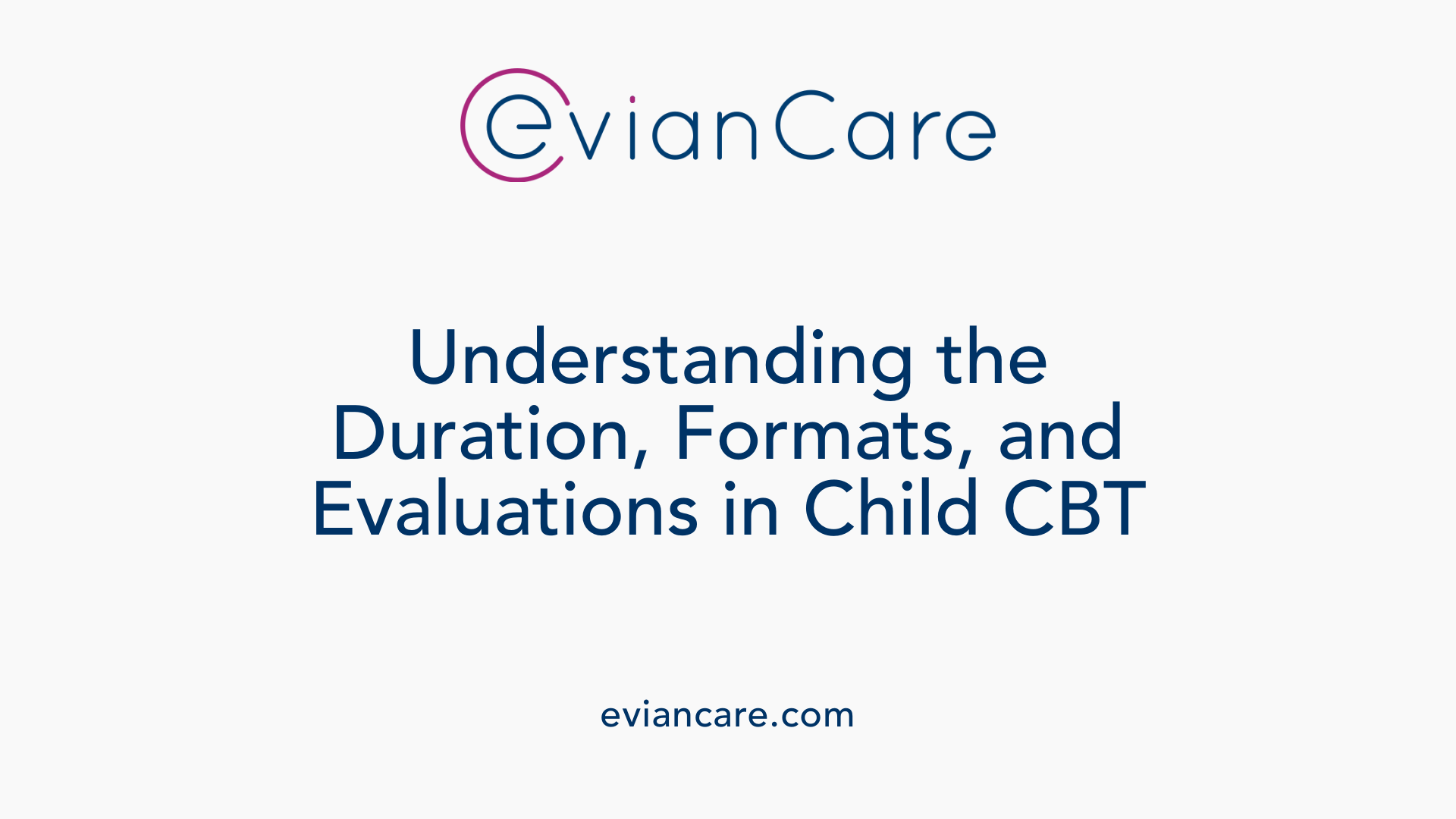
How long does treatment usually last and how often are sessions held?
Cognitive-behavioral therapy (CBT) for childhood anxiety typically spans 8 to 12 weekly sessions for mild to moderate cases. For more severe anxiety disorders, the treatment duration can extend and may involve more intensive approaches. The aim is to help children gradually face and manage their fears through structured exposure and skill-building exercises. The therapy's short-term nature ensures that children can learn and apply coping strategies quickly, with the possibility of longer treatment if symptoms persist.
What assessment procedures are used before starting therapy?
Prior to beginning CBT, thorough assessment procedures are essential. These include diagnostic evaluations to confirm the specific anxiety disorder, assessments of functional impairment to understand how anxiety affects daily life, and appraisals of cognitive patterns associated with anxiety. Standardized measures, interviews with the child and parents, and behavioral tests are commonly used. These assessments help tailor the therapy to the child's unique needs and improve the chances of successful outcomes.
How important are homework and skill reinforcement?
Homework and outside-the-session practice are cornerstones of CBT. Children are assigned tasks to help reinforce skills learned during therapy. This includes exposure exercises, cognitive restructuring activities, and relaxation techniques. Homework encourages children to apply tools to real-life situations, promoting generalization and sustained progress. Family involvement, especially parental support, can further enhance the effectiveness of homework and facilitate lasting change in managing anxiety.
Impact of Behavioral Therapy on Broader Child Outcomes

How does behavioral therapy help children understand, manage, and reduce anxiety?
Behavioral therapy, particularly cognitive-behavioral therapy (CBT), provides children with concrete skills to control their anxiety. This approach teaches self-monitoring techniques, allowing children to become aware of their anxious thoughts and feelings. It emphasizes challenging distorted or negative thoughts that contribute to anxiety, replacing them with more realistic perspectives.
A core component of CBT involves gradual exposure to feared stimuli or situations. This systematic approach helps children confront their fears in a controlled, safe environment, reducing avoidance behaviors that often maintain anxiety. In addition, CBT incorporates mindfulness and relaxation exercises to help children manage physiological symptoms of anxiety.
Research consistently shows that children who engage in CBT experience significant reductions in anxiety symptoms. These improvements often extend beyond fear reduction, enhancing mood and sleep patterns as children gain confidence in their ability to cope. Digital therapeutics, such as DaylightRx, have expanded access to structured, evidence-based CBT, especially in settings with limited resources. Notably, the FDA has approved such digital tools for generalized anxiety disorder, reflecting growing validation of technology-assisted therapy.
The ultimate goal of CBT is to empower children to understand their anxiety and develop independence in managing it. As children learn to apply these strategies, they often see improvements in overall functioning, including better social interactions and emotional regulation, both during and after therapy.
Long-term Benefits and Follow-up Outcomes of CBT
Are the benefits of behavioral therapy long-lasting for children?
Research shows that cognitive-behavioral therapy (CBT) for childhood anxiety often results in sustained improvements over time. While some studies have limited data beyond six months post-treatment, evidence from several efficacy trials and community follow-ups indicates many children maintain or even enhance their gains over the years.
Follow-up studies conducted approximately 3.9 years after initial therapy reveal promising outcomes. More than half of the children no longer meet criteria for any anxiety disorder, with recovery rates of around 53%. For their primary diagnosis, about 63% had no remaining symptoms. These results suggest that the positive effects of CBT are not only immediate but also enduring.
Additionally, reductions in general anxiety symptoms, improvements in social competence, and better overall functioning have been observed at long-term follow-ups. Interestingly, the long-term benefits tend to be more pronounced with greater parental involvement, which supports ongoing coping and resilience.
Despite some uncertainties, particularly regarding outcomes beyond four years, current data strongly support the idea that early intervention with CBT can lead to lasting relief from anxiety. Ongoing research continues to analyze factors that influence durability, aiming to optimize sustained recovery for children. In essence, CBT provides children with lifelong skills, and evidence suggests many see benefits that persist well into adolescence and beyond.
Neuroscientific Insights into CBT Outcomes
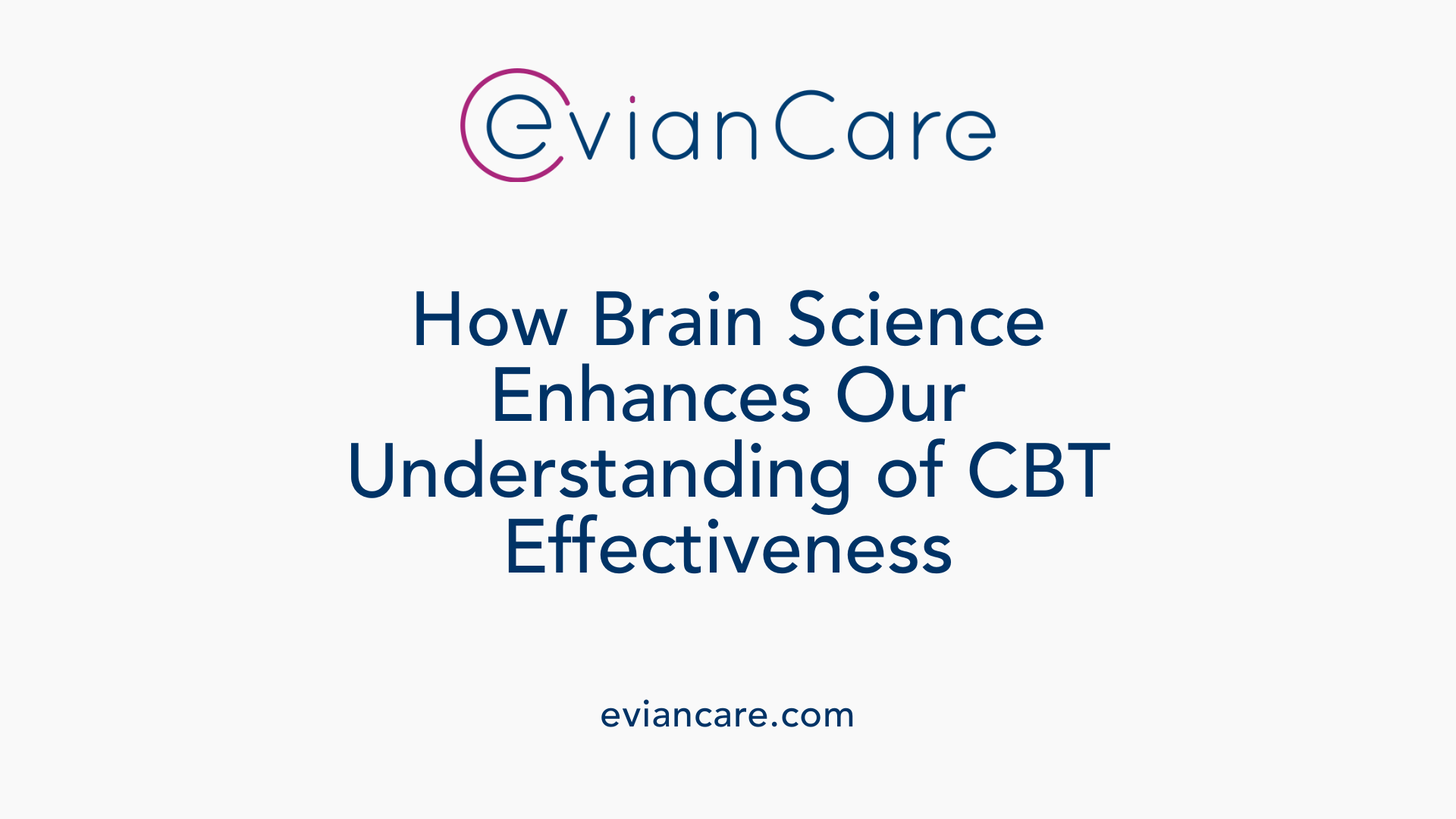
What does neuroscience research suggest about the neural mechanisms underlying CBT for childhood anxiety?
Recent neuroscience research offers valuable insights into how CBT affects the brain in children with anxiety disorders. Studies indicate that children who respond well to CBT often show higher activation in their prefrontal cortex during threat processing tasks. This brain area is critical for regulating emotions and suppressing fear responses.
Conversely, hyperactivity in the amygdala—the brain's fear center—has been linked with greater symptom reduction post-treatment. This suggests that children with more pronounced amygdala activity might experience more dramatic improvements as they learn to manage their fear reactions more effectively.
Further, activity in regions like the anterior cingulate cortex also appears relevant. These neural predictors, including activity patterns in the amygdala, prefrontal cortex, and anterior cingulate, hold promise for forecasting how children will respond to therapy.
Understanding these neural markers can pave the way for personalized treatment plans. For example, children with specific brain activation profiles might benefit from tailored CBT approaches, potentially enhancing their chances of recovery.
In summary, brain activity patterns provide a biological basis for individual differences in treatment outcomes. This neuroscientific knowledge not only advances academic understanding but also has practical implications for optimizing therapy strategies and improving long-term results for children with anxiety.
Harnessing the Power of Behavioral Therapy for Lasting Change
Behavioral therapy, especially CBT, offers a robust and scientifically supported approach to treating childhood anxiety. Its core techniques, including exposure, cognitive restructuring, and skill training, effectively reduce symptoms, improve functioning, and foster resilience. The involvement of parents enhances outcomes and sustainability, making CBT adaptable across diverse settings. As research progresses, neuroscientific insights promise personalized treatment pathways, ensuring children can overcome anxiety and lead healthier, more confident lives. Investing in behavioral therapy not only transforms individual lives but also benefits society by fostering healthier, more functional future generations.
References
- Cognitive Behavioral Therapy for Anxiety Disorders in Youth - PMC
- Cognitive-behavior therapy for children and adolescents with ...
- Behavioral Treatment for Kids With Anxiety | Child Mind Institute
- Cognitive behavioural therapy for anxiety disorders in children and ...
- Long-term effectiveness of cognitive behavioral therapy for youth ...
- Anxiety disorders in children and adolescents: Cognitive-behavioral ...
- Cognitive Behavioral Therapy, Sertraline, or a Combination in ...




